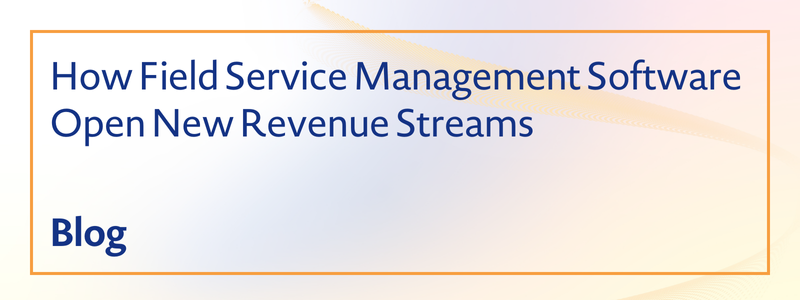How Field Service Management Software Open New Revenue Streams

brought to you by WBR Insights

The field service management market is on the up-and-up, with the latest research predicting growth from $1.78 billion in 2016 to $4.45 billion by 2022. This is leading more and more businesses to look to field service operations when creating their growth strategies.
Up until now, these companies have simply implemented new business processes to fill the gaps their existing enterprise resource planning systems were unable to. Mobile technician scheduling, contract and warranty management, and subcontractor management are all functions which cannot be handled by ERPs but can be managed with an integrated field service management software solution.
And it's through combining these two business elements field service providers can add value to their offering and open new opportunities for revenue. The combined solution can encompass the field service lifecycle in its entirety - from the initial service inquiry and opening contractual negotiations to invoicing and contract renewal.
Not a One-Size-Fits-All Solution
Bringing two different enterprise platforms together in this way is no mean feat, and unfortunately, there is no simple solution which will suit all providers. Field service software is, by necessity, highly configurable and needs to be able to manage data and business processes which may be unique to each customer.
Providers need to ensure they are looking for a solution which can incorporate multiple services and accept configuration from their existing ERPs. For example, a solution which combines its own core functionality with those of multiple independent software vendors would mean those vendors can assist with planning the integration strategy. Essentially, each arm of the software is built around key core principles which allow them to maintain their own identities and USPs while facilitating maximum compatibility with central systems.
"Business issues - not technology - drive the majority of changes in the industries we serve," writes Channel Futures. "These business needs spawn new technology requirements for our customers, who then look to their IT partners for help. And while your first reaction might be, 'Great - one more thing I have to figure out, deal with and manage,' the constant flow of customer requests can sometimes evolve into more than just a one-off hassle to be dealt with and managed."
Key Integration Areas
Whichever specific FSM solution alongside whichever ERP system you are presently running, successful integration requires a few key areas to be considered.
Data is incredibly important in modern business and is usually held by the ERP solution. However, it can be that, when data on customers, suppliers, inventory, etc. is accessed by the integrated FSM platform, permission is given to transform the data. Therefore, you need to decide whether you will allow this function by the FSM software, or whether the ERP solution will retain master control over the data.
Take stock for example. It may be that on-site technicians will need to adjust inventory levels as they carry out their work. If the FSM software can transform master data, then stock levels can be adjusted in real time which can happen with almost no downtime.
Sales and purchasing also require the sharing of information between FSM software and ERPs. The creation of invoices, sales orders, and service orders all require the FSM software to extract customer information from the ERP, and that such data be stored within the FSM. The alternative is to pull data from both systems, which would increase the complexity and time the task takes, as things such as pricing information would need to be confirmed in the ERP before the FSM solution would allow the creation of the invoice.
Another front which needs considering is the mobile data requirements of on-site technicians. FSM data access is important in this regard as engineers are likely to need to utilize these systems whether they presently have an internet connection or not. If they can access data offline, they can carry out their role effectively, with the database being synchronized with the ERP once they are back in range of internet service.
Final Thoughts
With a next-generation FSM and ERP incorporated solution, you can open additional revenue streams for your business by profitably exceeding customer expectations and thereby grow your business. Without such a solution, duplicate data entry and lack of visibility can negatively impact your business processes and prevent you from offering the value and service your customers demand.
New streams of revenue are set to be a hot topic at Field Service Palm Springs 2019, taking place in April at the JW Marriott Desert Springs.
Download the agenda today for more information and insights.